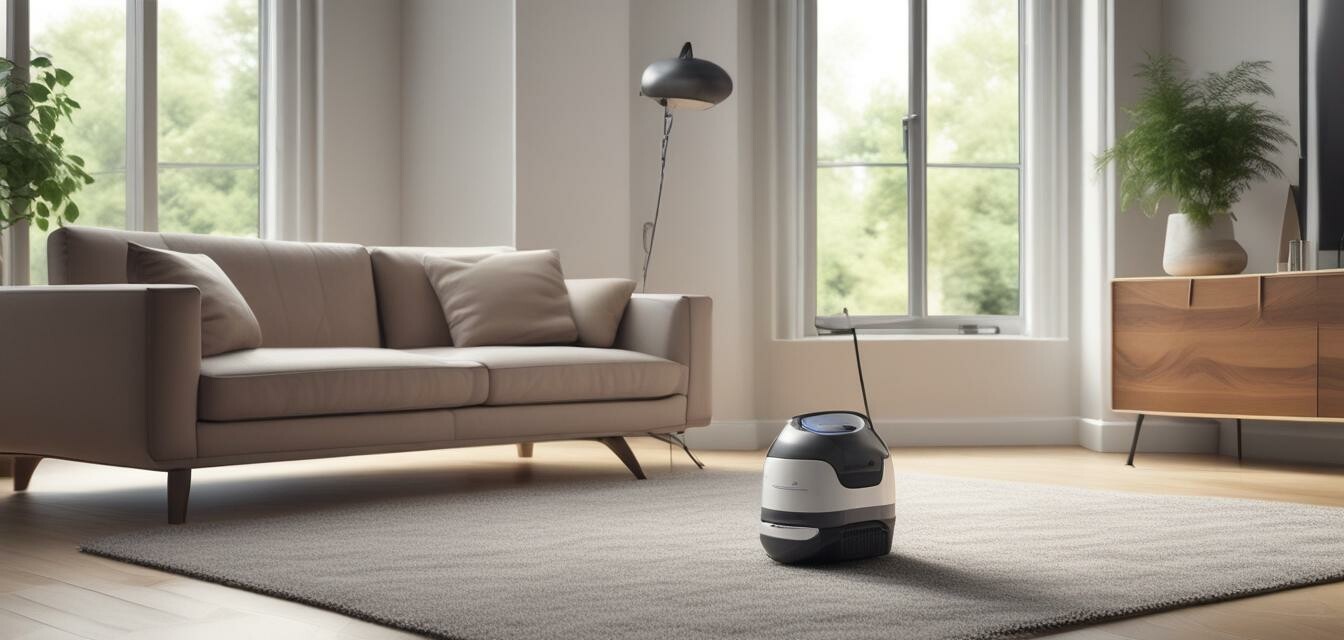
This article was generated using AI and is based on real customer reviews from the Amazon platform. It contains affiliate links, meaning we may earn a commission—at no extra cost to you. As Amazon Associates, we earn from qualifying purchases.
Trends in Allergy Tech: The Future of Clean Homes
Key Takeaways
- Emerging technologies are revolutionizing the way we tackle allergens in our homes.
- Innovative vacuum technologies, including HEPA filters and smart vacuums, are on the rise.
- Consumer preferences are shifting towards eco-friendly and efficient cleaning solutions.
- Understanding market trends is crucial for selecting the right vacuum for allergy sufferers.
- Continuous advancements promise a cleaner, healthier home environment for all families.
As we move into a rapidly evolving world of technology, the cleaning industry is no exception. Allergy sufferers are increasingly considering tech-forward solutions that aim to reduce allergens in the home. In this article, we'll explore the current trends in allergy tech, particularly in relation to vacuum cleaning, and how these innovations are paving the way for cleaner and healthier living spaces.
1. The rise of smart vacuums
Smart vacuum technology represents a significant leap forward in home cleaning. These advanced devices are equipped with sensors and mapping technology that allow them to navigate difficult areas without human intervention. Here are some of the standout features:
| Feature | Description |
|---|---|
| Self-navigating | Uses sensors to map the home and clean efficiently. |
| App connectivity | Control and manage cleaning schedules via smartphone apps. |
| Integration with smart home systems | Works with devices like Alexa and Google Assistant for convenience. |
| Advanced filtration | Many smart vacuums come equipped with HEPA filtration systems to trap allergens effectively. |
2. HEPA filtration technology
HEPA filters have long been known for their efficacy in trapping tiny particles, including dust, pet dander, and pollen. Here are the benefits of using HEPA-filter vacuums:
- Can capture up to 99.97% of particles as small as 0.3 microns.
- Helps to maintain better indoor air quality.
- Recommended by allergists and health professionals for allergy sufferers.
For more detailed information, check our HEPA Filter Vacuums section.
3. Eco-friendly and sustainable practices
As consumers become more environmentally conscious, the demand for eco-friendly vacuum options continues to grow. Here are some trends to keep an eye on:
- Manufacturers are focusing on sustainable materials and processes.
- Energy-efficient models that reduce electricity consumption.
- Vacuum cleaners designed for longevity, minimizing waste.
Learn more about sustainable options in our Buying Guides.
4. Robotic vacuums: Convenience and efficiency
Robotic vacuums have gained popularity thanks to their ability to operate autonomously. Here’s why they’re favored among allergy sufferers:
- Regular cleaning keeps allergens at bay without additional effort.
- Compact design allows them to fit under furniture easily.
- Many models come equipped with allergen-trapping filters.
For additional tips on maintenance and best practices, refer to our Maintenance Tips section.
5. The future of vacuum cleaning technology
Looking ahead, we can anticipate a range of exciting developments in vacuum technology:
- Integration of AI to enhance cleaning patterns.
- More compatibility with smart home ecosystems for enhanced control.
- Further advancements in filtration technology, including carbon filters for odor reduction.
As trends emerge, staying informed becomes vital for making the best purchasing decisions. Our News and Trends section will keep you updated.
Pros
- Improves indoor air quality by reducing allergens.
- Time-saving solutions with smart and robotic options.
- Sustainable practices align with modern consumer values.
Cons
- Some advanced models can be expensive.
- Maintenance costs can add up over time.
- Not all models are equally effective at trapping allergens.
Conclusion
As we witness significant changes in the way we approach allergen reduction in homes, it’s clear that technology plays a crucial role. From smart vacuums to eco-friendly designs, the trends highlighted in this article illustrate a promising future for allergy-friendly cleaning solutions. Whether you're a new homeowner or someone seeking improved cleaning methods, staying informed about these trends can help ensure you choose the right tools for a cleaner, healthier home.